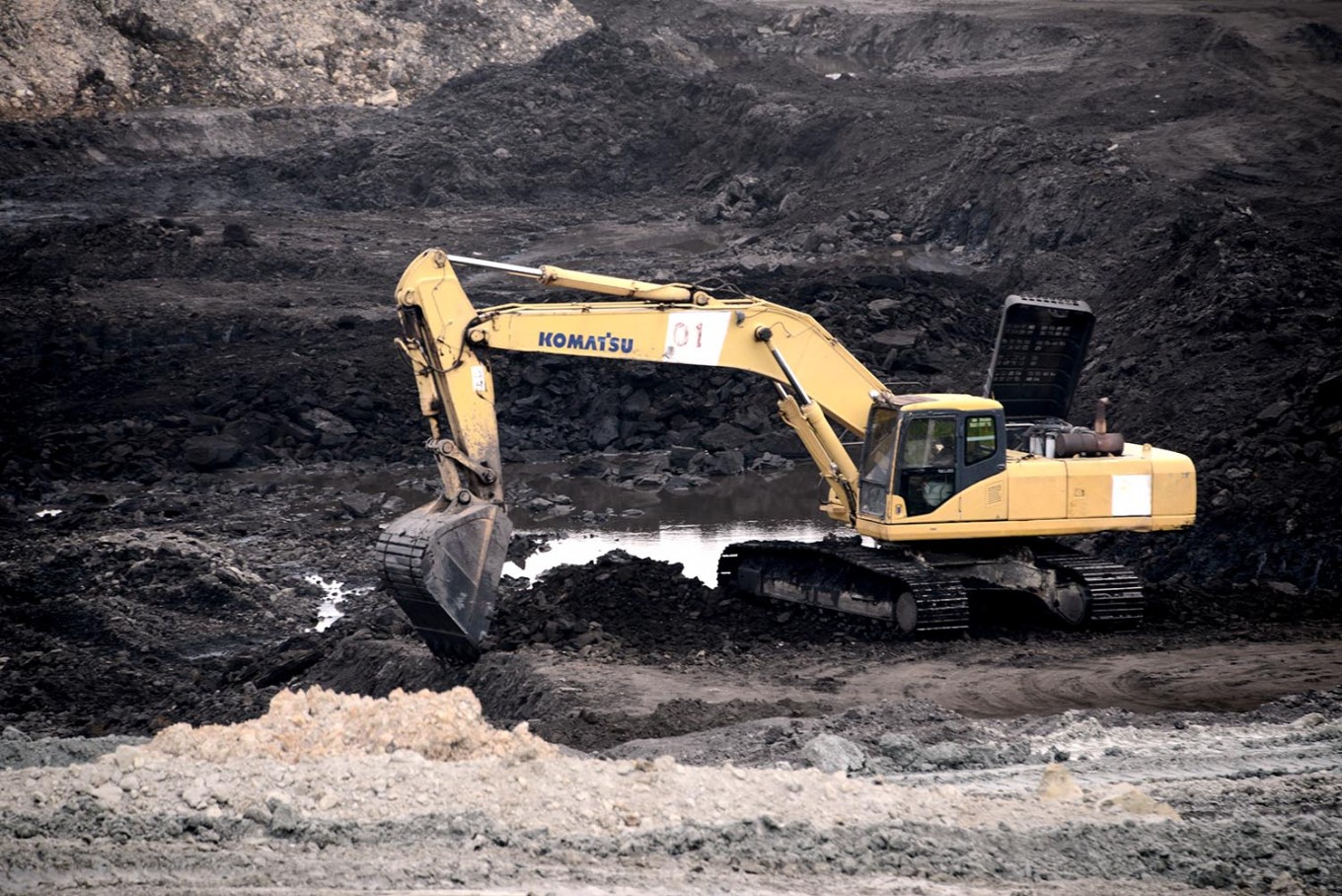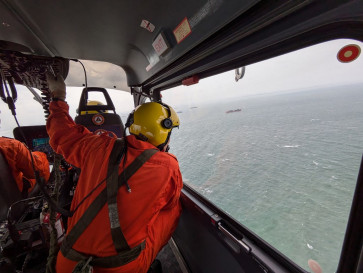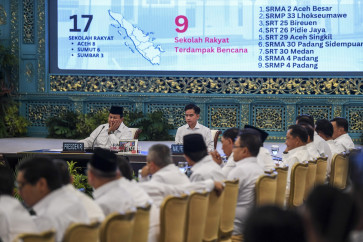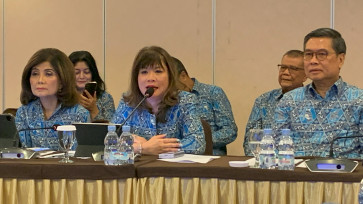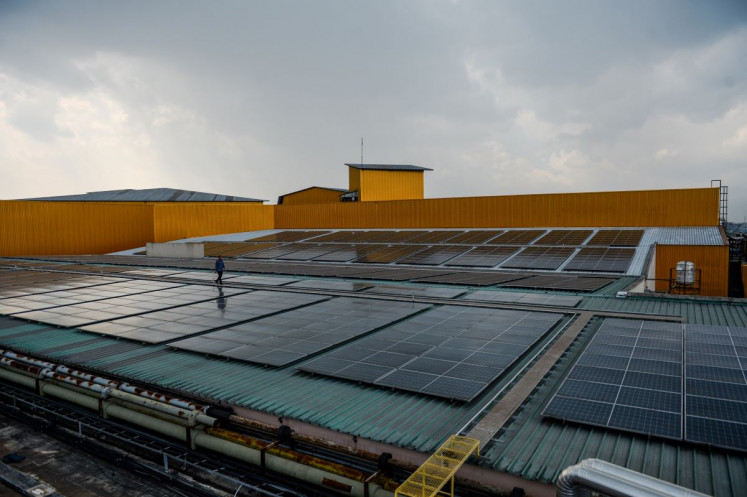Popular Reads
Top Results
Can't find what you're looking for?
View all search resultsPopular Reads
Top Results
Can't find what you're looking for?
View all search resultsExtractive industry vulnerable to natural disasters: Report
A report issued by Bersihkan Indonesia Coalition (Cleaning Indonesia Coalition) reveals that thousands of mines, power plants and smelters are located in disaster-prone areas, potentially threatening local residents in the event of natural disasters.
Change text size
Gift Premium Articles
to Anyone
Thousands of mines, power plants and other facilities in the extractive industry are sitting on time bombs as they are located within or near natural disaster-prone areas across the country, according to a report recently issued by a mining and clean energy watchdog coalition.
The report suggests a gap between the business-licensing process and disaster-mitigation, as well as environmental-protection measures, which could cause harm to local residents when natural disasters strike.
The report was issued by the Bersihkan Indonesia Coalition (Cleaning Indonesia Coalition), which compiled disaster risk mapping made by authorities such as the National Disaster Mitigation Agency (BNPB). The coalition later overlaid the maps with the location of mines, power plants and smelters across the country according to data from Global Energy Monitor. Among the members of the coalition are environmental groups Trend Asia and Mining Advocacy Network (Jatam).
The coalition found that more than 3,000 mines, power plants and smelters are located in areas designated as disaster-prone areas. Prevailing regulations prohibit the construction of buildings in disaster-prone areas designated in regional spatial planning.
Trend Asia director Ahmad Ashov Birry said the significant number of extractive industry facilities found in disaster-prone areas showed that authorities prioritized the interests of industry over the safety of people from natural disaster hazards.
“This shows a gap between the science [of disaster risks] and policy [of permit issuance],” Ahmad said during the report’s launch recently.
Merah Johansyah of Jatam said the revised Mining Law and the Job Creation Law might exacerbate the situation as the legislation allowed the government to grant more permits for extractive businesses in disaster-prone areas.
Furthermore authorities could not mitigate future disasters properly because of a lack of information in current spatial planning that identified potential hazards.
Read also: Putting quakes on spatial maps
The 2007 Zoning Law requires regional administrations to take into consideration potential natural disasters as one of the parameters when drafting regional spatial planning. The draft should then be checked by the Agrarian and Spatial Planning Ministry following recommendations from other agencies, including the Volcanology and Geological Hazard Mitigation Center (PVMBG).
However, officials admitted that not all regional administrations followed the procedure properly, as many disregard guidelines and recommendations from the geological agency.
Merah claimed the government had yet to carry out proper audits and evaluations of extractive industry activities as the central government had greater authority over such permits.
He urged the government to stop issuing permits for extractive businesses, especially those located in disaster-prone areas. “We need to stop such energy politics and find ways to consume energy safely.”
The coalition highlighted the Panau coal power plant in Panau subdistrict in Palu, Central Sulawesi. It was destroyed during the 7.4-magnitude earthquake that rocked the province in 2018 and has not been fully functioning since.
While there have been claims that the waste from the power plant caused cancer among Panau residents, local resident and lawyer Arzan H. Hasan said the earthquake had exacerbated the situation.
“Heaps of coal-burning byproducts can be found near the riverbed [after the earthquake], polluting the river, which is a source of water for local streams and wells,” Arzan said.
Read also: Mixed reaction as coal ash taken off hazardous waste list
But businesses have downplayed the report. The Indonesian Coal Mining Association (APBI) said coalmining companies expected the mining sites to be located in areas prone to natural disasters such as mountainous areas that were rich in mineral resources.
APBI executive director Hendra Sinadia said that major mining companies complied with regulations on safe mining and disaster mitigation, although standards may vary across companies.
The Indonesian Smelter Association (AP3I) said smelters tended to be located in safer locations compared with mines.
“The damage inflicted on smelters by earthquakes and other disasters depends on how bad the disaster is. However, none of our members have reported serious damage to their facilities from natural disasters,” AP3I deputy chairman Jonathan Handoyo told The Jakarta Post on April 29.
BNPB spokesperson Raditya Jati said all businesses were required to include disaster risks upon submitting their strategic environmental assessment (KLHS) and environmental impact analysis (Amdal) to authorities. The two documents are necessary in permit issuance for extractive businesses.
The agency provided disaster-risk analysis that must be referred to by businesses in their KLHS and Amdal documents as mandated by the 2007 Disaster Mitigation Law.
Read also: Jobs law still sparks concern over environmental protections. Experts doubt new rules will fix it.
Responding to Raditya’s statement, Trend Asia’s Ashov said most Amdal documents did not include a comprehensive assessment of disaster risk. The analysis also often does not include an assessment of disaster risks potentially inflicted by the business activities, he claimed.
Meanwhile, Jatam’s Merah said the process of analyzing environmental impacts had been relaxed as the revised provisions in the Job Creation Law do not require local residents to be involved in the analysis.
The Environment and Forestry Ministry business and activities’ environmental impact mitigation director Ary Sudijanto, who has the authority to review any Amdal submitted by a business, did not respond to the Post’s requests for comment.

